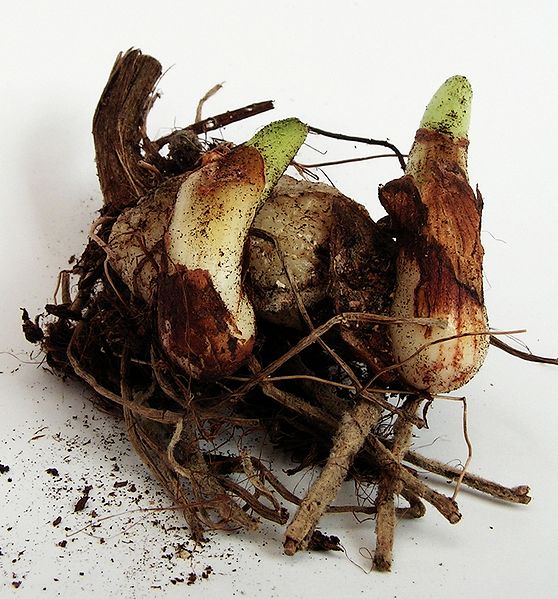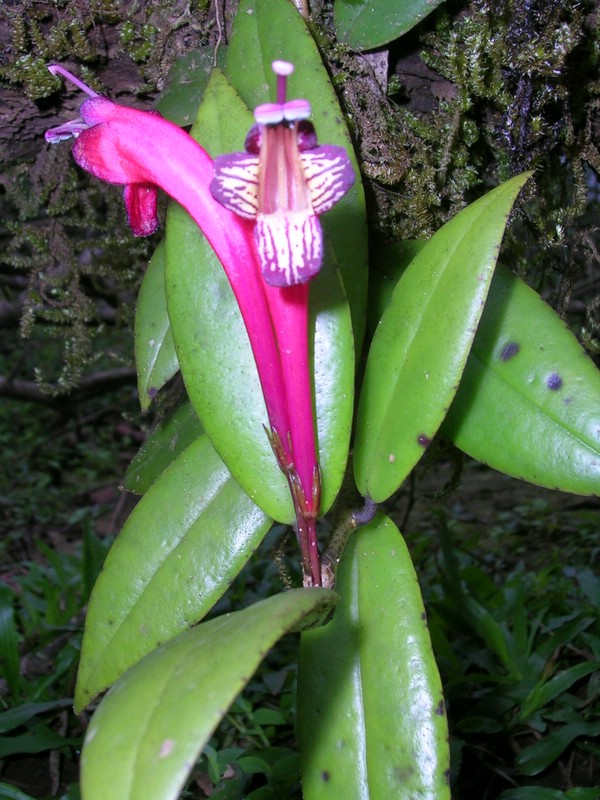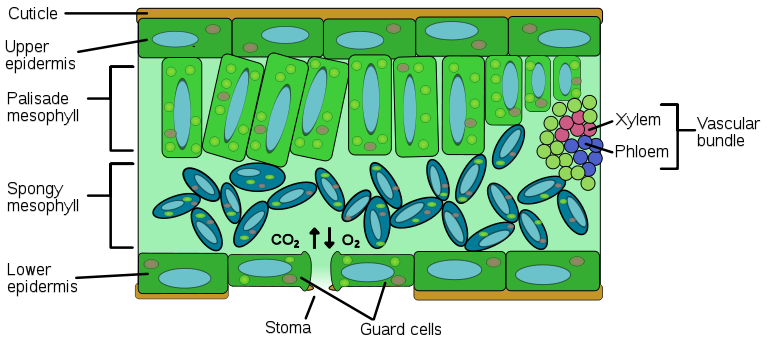Adaptation
 Dendrobium officinale is a monocot,
therefore it does not have secondary tissues and once the orchid
has reached maturity the stem will not increase in girth.
Dendrobium officinale also develops a
pseudobulb and leaves which are also known as the cane. The
leaves are covered in leathery cuticle and are dark green in
color. The leaves are attached at nodes along the stem. The
flowers have a grayish appearance about 3.5-4 cm.
Dendrobium officinale is a monocot,
therefore it does not have secondary tissues and once the orchid
has reached maturity the stem will not increase in girth.
Dendrobium officinale also develops a
pseudobulb and leaves which are also known as the cane. The
leaves are covered in leathery cuticle and are dark green in
color. The leaves are attached at nodes along the stem. The
flowers have a grayish appearance about 3.5-4 cm.
Roots
The root system of D. officinale is very unique due to
the fact it is a
epiphyte. The roots are made up of secondary roots which
means they have branched off from the stem. Velamen, a layer of
cells that surrounds the root, is usually white and spongy which
helps the root to absorb water and nutrients from its substrate.
Although the root is surrounded in velamen, the roots can
contain chloroplasts which can photosynthesize.
made up of secondary roots which
means they have branched off from the stem. Velamen, a layer of
cells that surrounds the root, is usually white and spongy which
helps the root to absorb water and nutrients from its substrate.
Although the root is surrounded in velamen, the roots can
contain chloroplasts which can photosynthesize.
The roots also have a symbiotic relationship with fungi.
Mychorrizae of the fungi incorporates itself within the roots of
D. officinale and aids in acquiring nutrients and water
from the substrate. In return for the water and the nutrients
D. officinale provides extra sugars to the fungi in
which both the orchid and the fungi benefit in a mutalistic
relationship.
Leaves
The leaves of D. officinale lie very flat in order to
maximize absorption of sunlight. Due to the habitat, which is in
tropical and subtropical parts of China, D. officinale
must have large surface area in order to increase sunlight
absorption. The substrate in which Dendrobium officinale
lives is a very shady region and the leaves must collect the
sun's rays to aid in photosynthesis.

To learn how Dendrobium officinale produces sugars for
itself and provide some sugars to the fungi check out my
Nutrition page.
Return to Home page.
